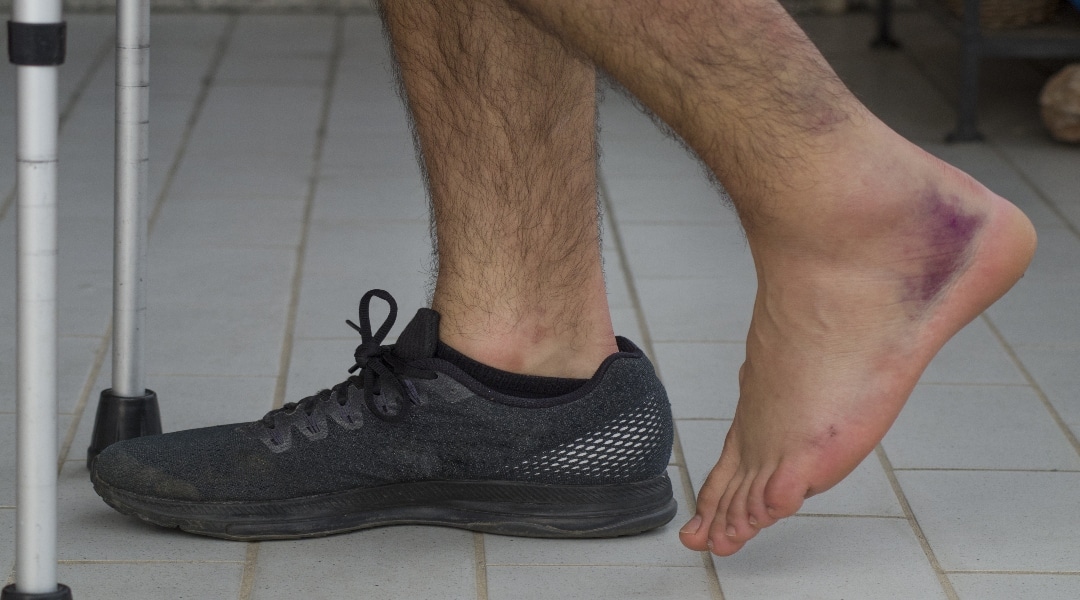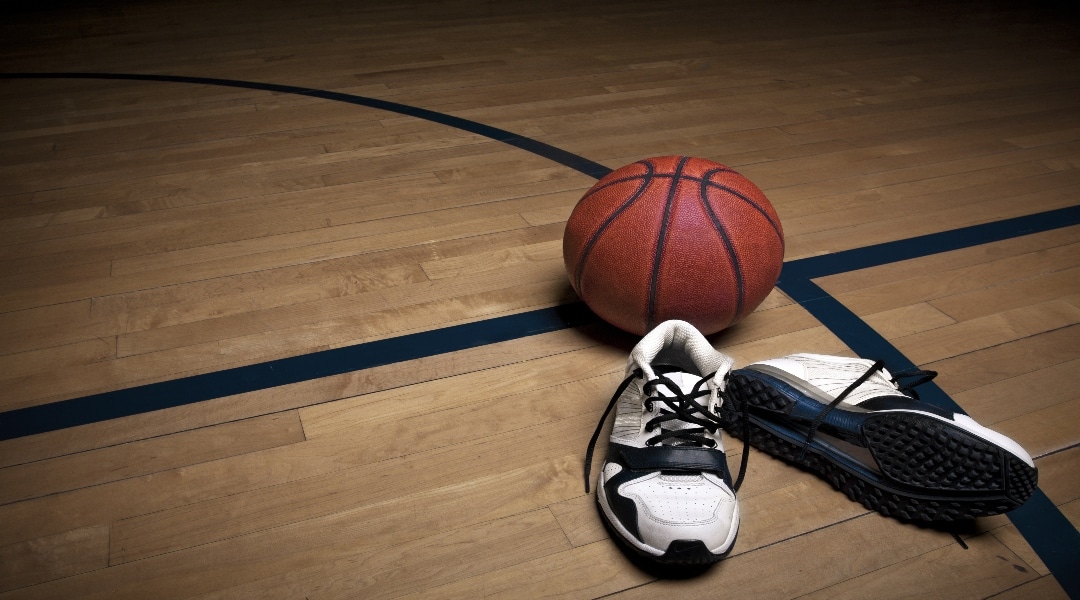Common Basketball Foot and Ankle Injuries
Student athletes and their parents across Kansas breathed a sigh of relief when it was announced that basketball season could go on as scheduled!
Sure, the games won’t feel quite the same with empty bleachers. But the most important thing is protecting the physical and mental wellbeing of our kids and families while allowing them to keep doing what they love safely!
Of course, while current precautions will help keep athletes at lower risk of contracting COVID or other communicable illnesses, they aren’t going to be much help for a sprained ankle or other conventional sports injury! And since you probably won’t be allowed to watch your child compete on the court, it’ll be especially important to check in with them about their foot and ankle health after the game, and keep an eye out for any troubling symptoms.
It helps to know what to look for. Here are a few of the basketball-related foot and ankle injuries we see most often in kids (and adults, too).
Stress Fractures
Most times when you hear the word “fracture,” you probably imagine a catastrophic injury that puts bones out of place and causes instant, severe pain. Stress fractures aren’t like that—but that doesn’t mean you don’t need to take them seriously!
Stress fractures are small cracks that develop on the surface of bones over time. If you push yourself too hard and don’t give your feet adequate time to rest and recover after hard exercise, the soft tissues that cushion the feet start to wear down and lose their “springiness.” That means a greater percentage of the impact forces must be borne directly by bones. Do that for too long, and cracks begin to form.
Classic signs of stress fracture include pain and soreness that increases during and after activity, then recedes with rest. The weight-bearing bones of the foot, particularly the metatarsals near the arch and ball of the foot, are especially vulnerable. Unfortunately, continuing to play with stress fractures causes the pain to gradually worsen with time, until the symptoms are significant
There’s good news and bad news when it comes to treatment. The good news is that stress fractures usually don’t need surgery or any kind of invasive treatment. The bad news is that they do need a lot of rest to heal, and that means no basketball for a while—usually 6-8 weeks.
Restarting too soon, even if symptoms feel like they’ve mostly stopped, can undo all the healing that’s already taken place. So discipline is key! If necessary, we can further help with casting, custom orthotics, or other conservative therapies to improve comfort or accelerate the healing process as much as possible

Ankle Sprains
Ankle sprains are the most common traumatic sports injury overall, and plenty common in basketball! Although sprains can range in severity from minor ligament stretching to catastrophic tears, it’s important to take any ankle injuries you or a loved one sustains extremely seriously.
We recommend you stop playing immediately after a suspected sprain, and see us as soon as possible for an evaluation and treatment options. The good news is that mild sprains can usually be treated non-invasively with methods like immobilization (for example using a brace), laser therapy, and physical therapy. But if you don’t give your sprain the time and protection it needs to heal, your risk of future sprains (and even post-traumatic arthritis and chronic joint instability) increases significantly.
A good way to help reduce the risk of ankle injuries on the court is by investing in a good pair of high-top basketball shoes, which offer a little extra ankle stability and protection vs low-top gym shoes. But don’t rely on the equipment to do all the work either! Taking time to stretch and warm-up before playing can be just as important for injury prevention.
Heel Pain
Heel pain is very common among basketball players. However, the exact heel pain diagnosis can vary from athlete to athlete, with certain conditions more common than others based on factors such as age.
For youth athletes—especially those during an adolescent growth spurt—the primary heel pain diagnosis is Sever’s disease, also known as calcaneal apophysitis. In fact, this condition only affects kids!
During childhood, the end surface of the heel bone is covered not by hard, mature bone, but by an area of softer cartilage called a growth plate. Repetitive stress can cause this area of tissue to become irritated, leading to pain, stiffness, and swelling at the back, sides, or bottom of the heel. Kids may be extra vulnerable during a growth spurt, especially if tight calf muscles or other connective tissues aren’t quite “keeping up” with the growth of the heel bone.
Older teens and adults, meanwhile, are more likely to develop plantar fasciitis (although it can arise in younger kids, too). This condition results from chronic aggravation of the plantar fascia, a fibrous ligament-like tissue that stretches across the bottom of your foot and supports the arch. When the plantar fascia becomes irritated, it typically begins to stretch and tear near where it inserts into the heel bone, around the bottom of the heel.
Regardless of the age of the athlete or the nature of the diagnosis, chronic heel pain can easily lead to major problems on the basketball court and will only get worse if not properly treated.
Both Sever’s disease and plantar fasciitis can almost always be treated without surgery, and both benefit from advanced treatments like laser therapy that can help you heal faster and get back on the court sooner.

Quick Basketball Injury Prevention Tips
We’ve covered a few of these already above, but they’re worth repeating. Following these tips can help keep athletes of all ages better protected against accidental foot and ankle injuries:
- Always wear an appropriate, well-fitting pair of high-top basketball shoes.
- Replace shoes that do not fit or have worn down with use.
- Always take time to stretch and warm-up before practices or games.
- Avoid overloading your training schedule with high-impact activities. Make sure you plan regular rest days, as well as days to focus on strength-training your legs and ankles and days for low-impact cardio like swimming or cycling.
- Don’t play on an unsafe court. It should be dry, clean, and free of obstacles.
- Listen to your body. If something hurts, don’t push it!
Don’t Let Basketball Injuries Slow You Down
Here at the end of 2020, we know you already have plenty to worry about healthwise—for yourself and any student-athletes that might be in your family.
While it’s extremely important to exercise good judgment and caution with respect to Covid-19—and we encourage you to take proper precautions!—don’t forget about “ordinary” sports injuries, too! Being forced to sit out the rest of the season is no fun for any athlete, regardless of the reason.
If you or a loved one does suffer a basketball-related foot or ankle injury, give the Community Foot Clinic of McPherson a call. We are open and providing excellent care for all painful foot and ankle conditions, while continuing to maintain the highest standards of health and safety for our patients and staff. We even have telemedicine available for follow-up and certain evaluation appointments!
We are sports fans ourselves, and we’ll do everything we can to help you heal quickly, completely, and get back to doing what you love! Just call (620) 241-3313, or request an appointment online.
© Community Foot Clinic of McPherson. All Rights Reserved.
Privacy Policy | Terms & Conditions
Web Design by CP Solutions
Marketed by VMD Services
